Some of the links in this post may be affiliate links.
Hoyas are among the easiest houseplants there are. There are a variety of species available to grow in the home and most of them thrive on neglect! Imagine that. A houseplant that will tend to do better if you forget about it once in a while. Keep reading and I will show you how I take care of my Hoya carnosa (although the care will also apply to most hoyas!)
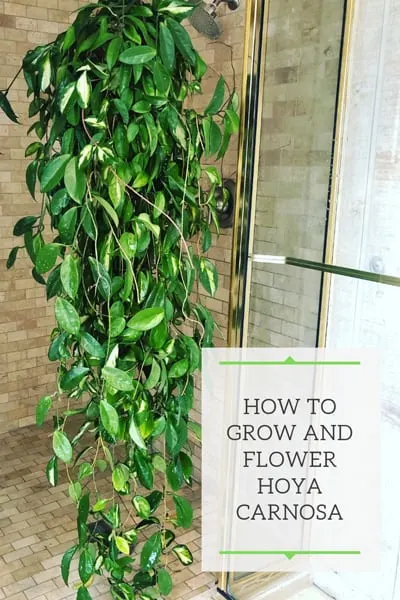
Not only do hoyas thrive on neglect and have beautiful waxy foliage, hence the common name Wax Plant, but they also will flower for you! More on that later.
Table of Contents
Hoyas in Nature
Most hoyas are epiphytes in nature, and Hoya carnosa is native to Eastern Asia and Australia. Being epiphytes, you’ll want a light and coarse growing medium. More on this later.
Did you know that Hoyas are actually related to milkweed? Which makes absolutely perfect sense because if you have ever seen a milkweed flower (Monarch butterfly caterpillars only eat Milkweed), you will know exactly what I’m talking about. There is a strong resemblance.
Hoya Carnosa Care
Although Hoyas are not succulents, most Hoyas have very thick, succulent-like leaves. Which is great because it means that they are very forgiving in the home and will tolerate (and even thrive) from some neglect!
Hoya carnosa plants are most often grown in hanging baskets, but these are vining epiphytes so you can also grow them as a floor plant using a support such as a trellis.
To illustrate exactly how easy Hoya carnosa plants are, let me show you my variegated Hoya carnosa that I’ve had in the same pot since I purchased the plant probably around 16 years ago.
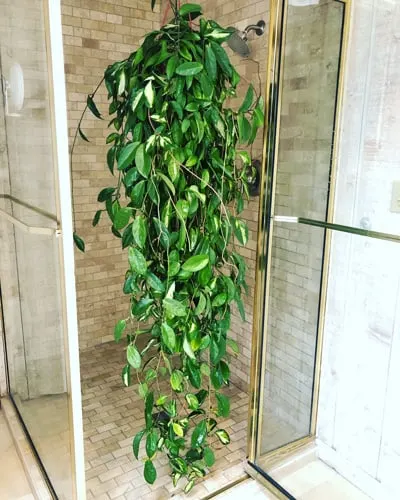
It is several feet long and I sometimes will give it extra special treatment and will water her, shower her, and let her drip dry in the shower. Otherwise I would be making a big mess in my sunroom where the plant hangs in front of north and east windows.
General Hoya Growing Tips
There are many species of Hoya and some have more specialized needs, however, according to the International Hoya Association, there are a few pieces of generalized advice that apply to ALL hoyas:
- Don’t grow hoyas in huge pots. They like to be at least somewhat root bound.
- A well draining soil, such as a good succulent mix, is a good choice for hoyas. More on soil blends later.
- If you don’t have enough light, your hoya won’t bloom. If you have too much light, your leaves may yellow or burn. Experiment and find a balance!
- Finally, there is one secret that you may not know that pertains to flowering. Keep reading to find out soon.
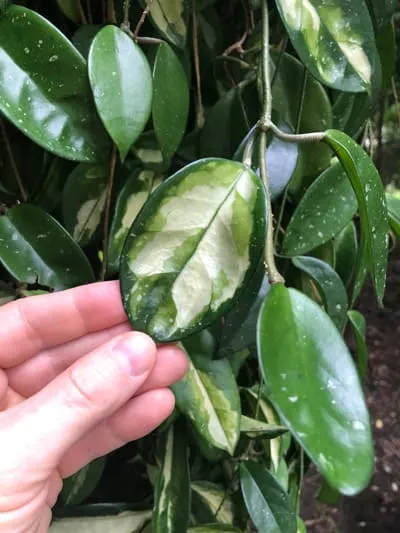
Hoya Soil
My Hoya carnosa has been in the same pot for 16 years so I haven’t repotted this plant. However since Hoyas are epiphytes, they benefit from a light and coarse potting mix.
Epiphytes really need a lightweight potting mix. There are many combinations that you can use to create this idea potting mix.
Horticulture magazine recommends 2 parts of a soilless mix to 1 part fine grained bark mix as a great option for many epiphytes. In my opinion, this is a great option for more plants that just epiphytes. I have added orchid bark to my soil blends for a while now.
Personally, for other types of Hoyas, I have used a good succulent/cactus mix, to which I have added something “chunky” such as orchid bark, perlite or even pumice.
Adding chunky ingredients to your soil will aerate your soil, allow more oxygen to your plant’s roots, and allow it to dry out more quickly. Epiphytes will love you if you can provide these conditions.
Check out my blog post dedicated specifically to repotting Hoyas. You can see the entire process step-by-step and with photos.
And also my guide on choosing the best pot for Hoyas.
If you want an amazing mix to use right out of the bag, check out the amazing Hoya soil blend from Oh Happy Plants. This is an amazing mix and you will get 10% off at checkout automatically if you use my link.
Hoya Light
Hoya carnosa prefers brighter light. If you don’t give this plant enough light, it will produce all foliage and no flowers. This wouldn’t be a huge issue, but don’t you want to see some flowers? They are quite spectacular!
Take a look at the flowers on my Hoya carnosa. Aren’t they stunning??
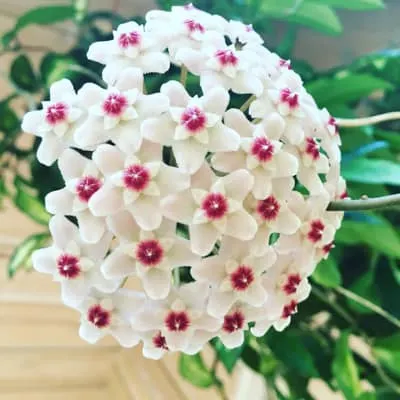
I keep my Hoya carnosa in my sunroom which has a large wall of Northern exposure windows and Eastern exposure windows, as well as a skylight. It receives some direct morning sun and has done very well in this location.
Be careful not to give your plant too much sun otherwise it may start to yellow and potentially burn. My home is not blessed with any good Southern exposure windows.
If I did have some Southern exposure windows, I would place my Hoya carnosa there for sure, with some blinds to diffuse the direct sun a bit.
If you want your hoya to bloom, you must be providing enough light. This is number 1! There are other factors that will encourage your hoya to bloom, but we’ll get there shortly.
Watering Hoyas
You may have heard that you shouldn’t overwater your hoya. Overwatering is a terrible term in my opinion. So much so that I’ve written a blog post on what it really means.
Be sure not to miss my overwatering misconceptions post.
It is probably the one piece of advice that I have given people that has helped them the most when it comes to houseplant care! And it goes well beyond Hoyas!
When I water my Hoya carnosa, or any other hoya that I have, I will water it thoroughly until water comes through the drainage hole.
Discard all excess water. Epiphytes sitting in water will spell death!
After watering, I will wait pretty much until all of the soil is completely dry. In this way, I treat them very much like succulents when it comes to watering (even though Hoyas are not technically succulents).
Some people prefer to wait until the leaves pucker a bit and then water. I know that I’ve done this unintentionally a few times. Clearly, the plant has been with me for 16 years and has not complained much 🙂
If you keep hoyas TOO dry for too long, the lower leaves on the vines will yellow and eventually turn crispy and fall off.
However, a dry period in the winter time will often spark your plant into blooming in the Spring. Give your plant a 4-5 week dry period in the winter time, and then resume care as normal.
I’ve tested this with my plant, and it worked!
Fertilizing Hoyas
I never fertilize hoyas during the winter months, but will fertilize dilutely with every watering throughout the growing season.
I’ve been using an incredible fertilizer called Dyna-Gro Grow. It is a premium, complete fertilizer that contains all the micro and macro nutrients for plant growth.
There is a noticeable difference in my plants since I’ve started using this fertilizer so try it out for yourself! You will not be disappointed.
Simply mix 1/4-1/2 teaspoon of Dyna-Gro Grow to a gallon of water and use at every watering.
How to Get a Hoya to Bloom
Light is the #1 most important priority! You can’t expect your hoya to bloom in lower light, although the plant will tolerate lower light.
Keeping your plant potbound will help encourage blooming! My hoya carnosa did not bloom for several years, but once it started, it bloomed every single year to some degree.
Once your hoya blooms, be sure NOT to deadhead the flower! The future blooms will grow from the “spurs.” Take a look at what the spur looks like below on my plant:
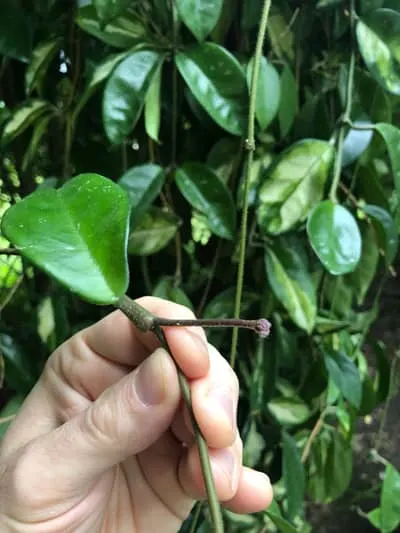
So when the plant is done blooming, just gently brush off the petals or let them fall off. Don’t cut anything off otherwise you will be cutting off where the plant will flower the following year!
Be sure to smell the flowers because they have a delightful fragrance! One time my hoya bloomed and I didn’t even know. I smelled something in the other room, and I probed around the sunroom until I found a spectacular flower on my hoya.
Also, you may notice that the newer vines don’t have any leaves. There is nothing wrong with your plant. This is just how they grow so leave them alone. Take a look at the newer vine below on my Hoya carnosa.
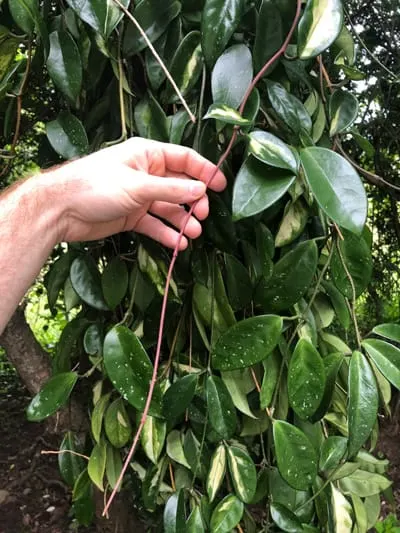
Propagating Hoya
Unless you want to propagate your Hoya, I would recommend never cutting any vines off your plants or you may prevent it (or at least decrease) the amount of flowering. I only take dried up vines or leaves off my hoya.
If you do want to propagate your plant, follow these steps recommended by the International Hoya Association:
- Take a cutting with 2 or 3 leaf nodes. A node is the point on the stem where the leaf meets the stem. Remove the leaves at those nodes. (You’ll obviously want to keep the leaves at the tip of the cuttings)
- Dip the base of the cutting in a rooting hormone.
- Place the cutting(s) in a pot of soilless mix to which you’ve added about a third perlite or pumice. (Approximately 2 parts soilless mix to 1 part of perlite or pumice).
- Water thoroughly and discard excess water. Don’t allow the potting mix to dry out completely while the cuttings are rooting.
I like to use Garden Safe Rooting Hormone that I purchase easily on Amazon.
That’s all folks! Do you have a Hoya carnosa? Comment below! I’d love to hear from you.
There are so many other kinds of beautiful Hoyas to grow, but this one definitely belongs in any houseplant collection. Check out my posts on more lovely varieties:

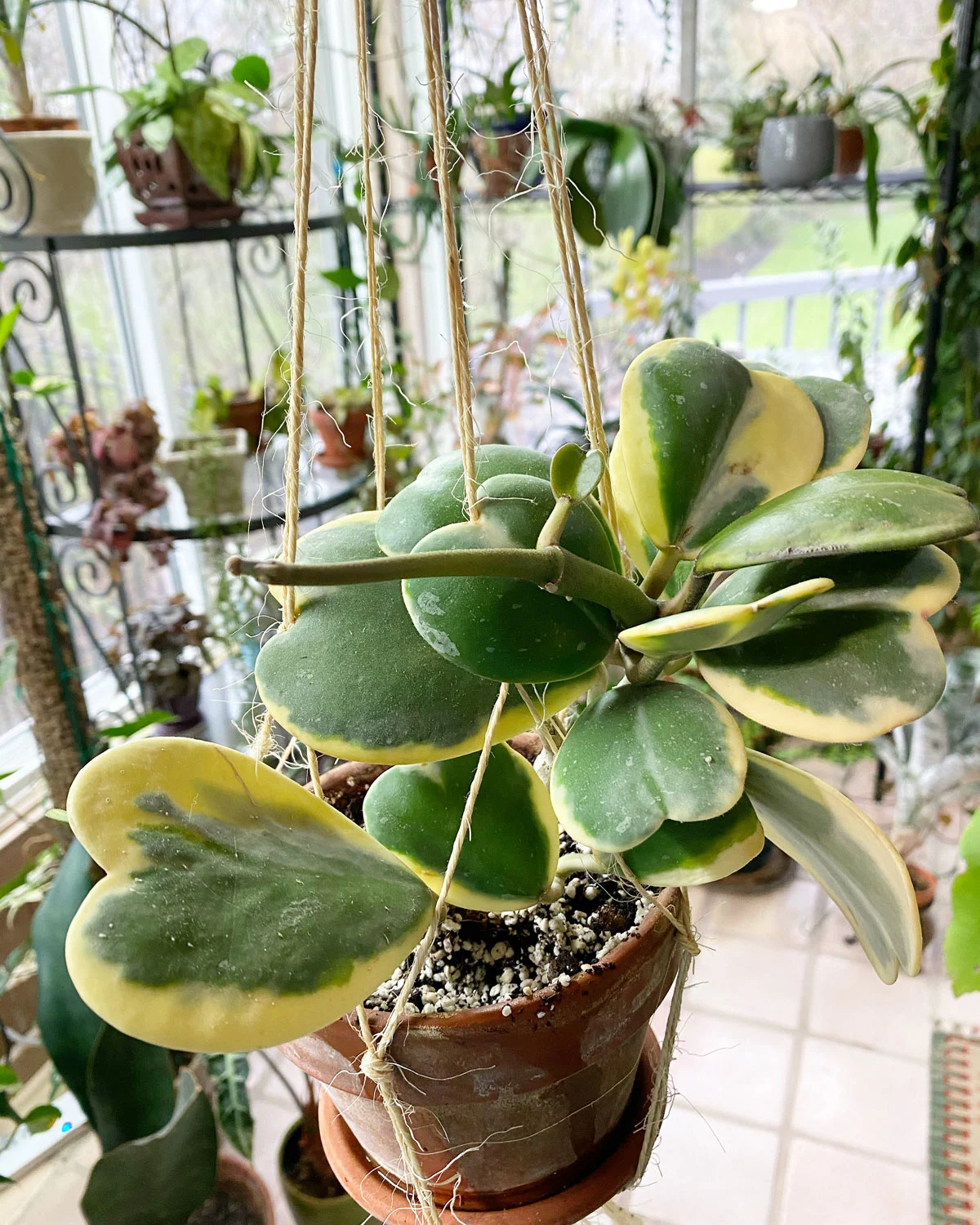
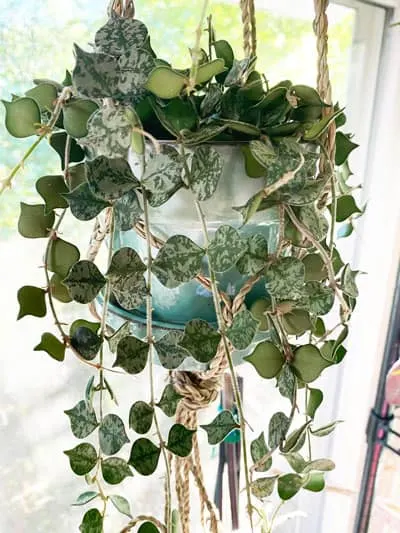
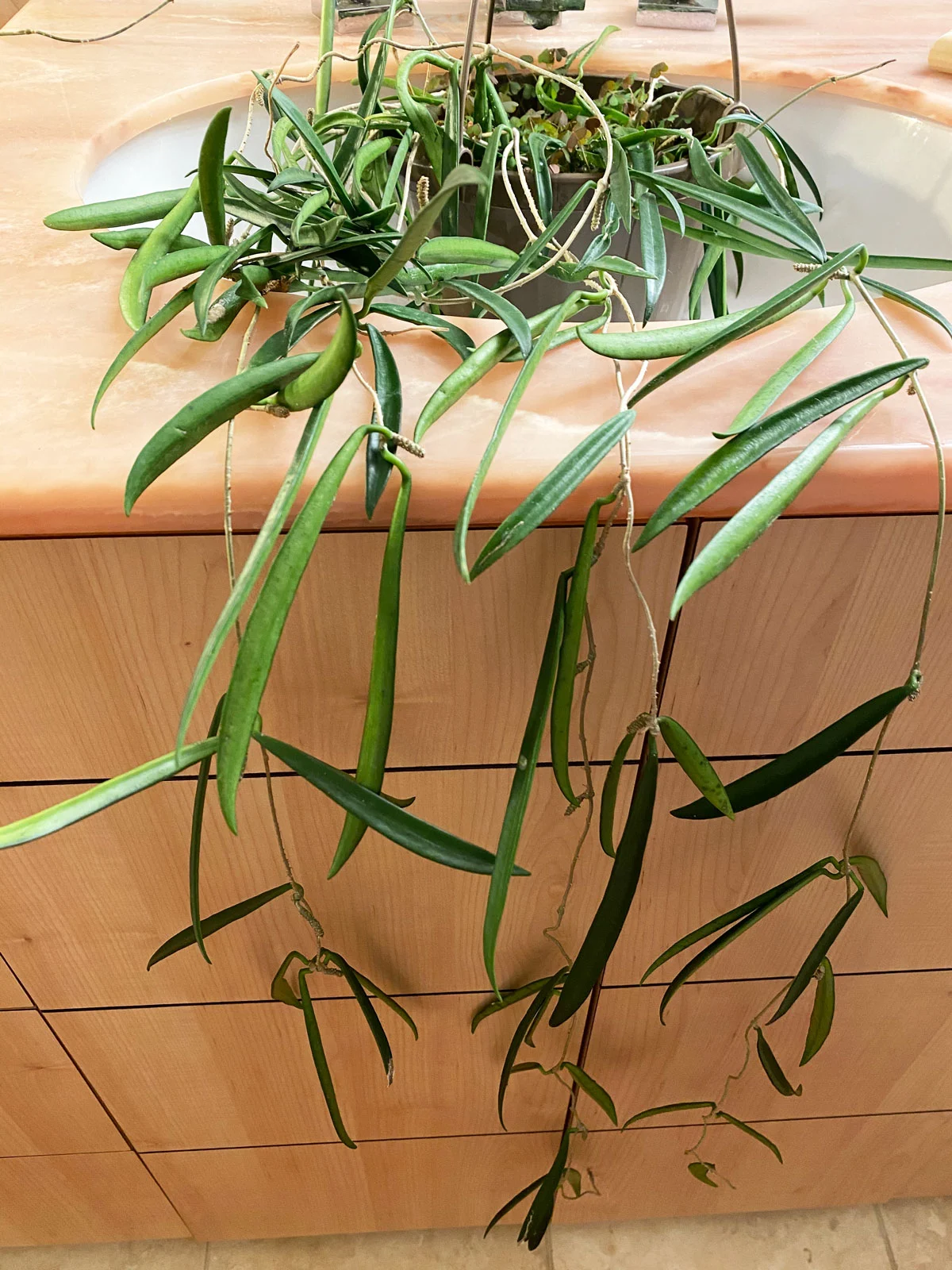
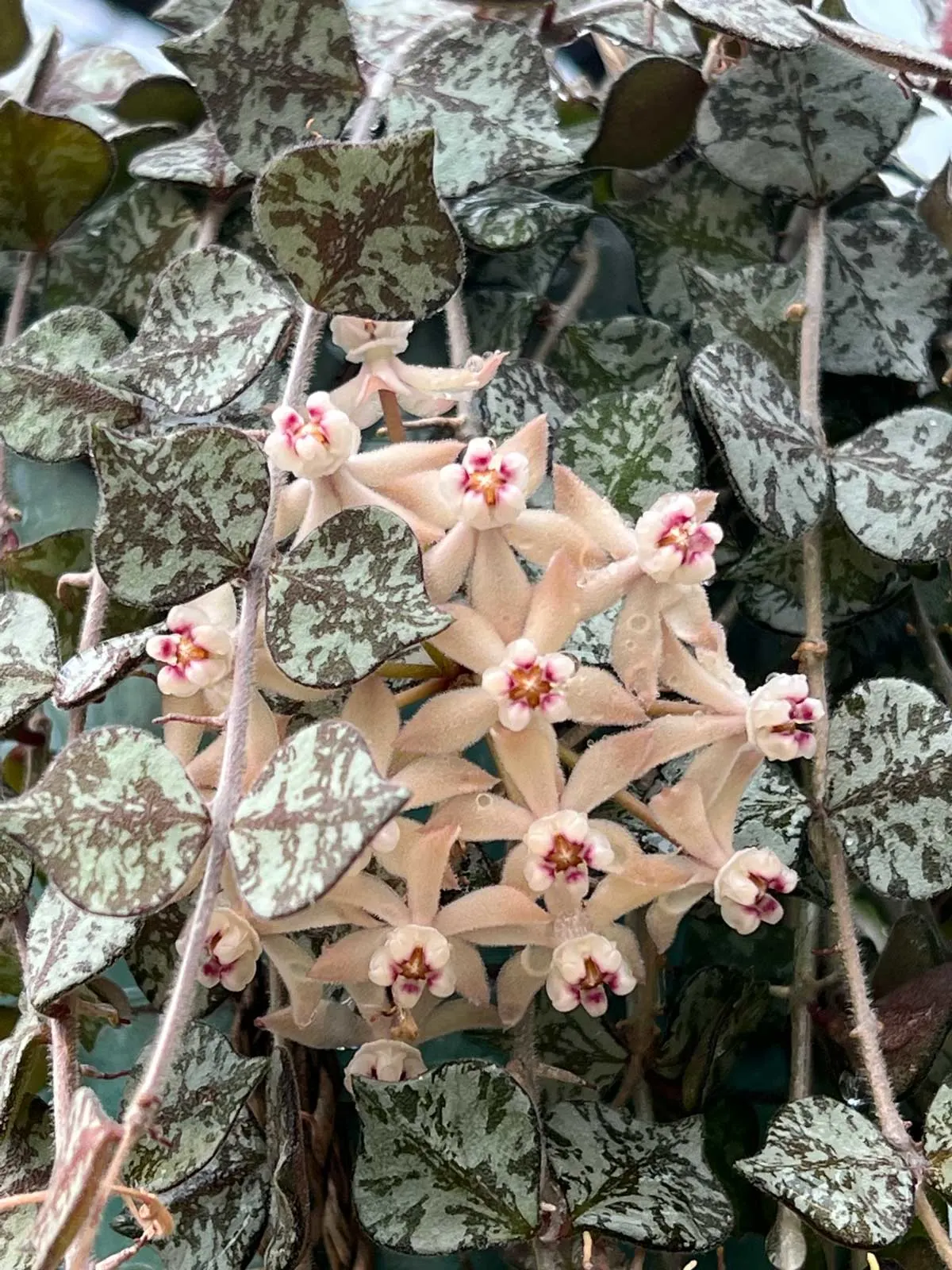
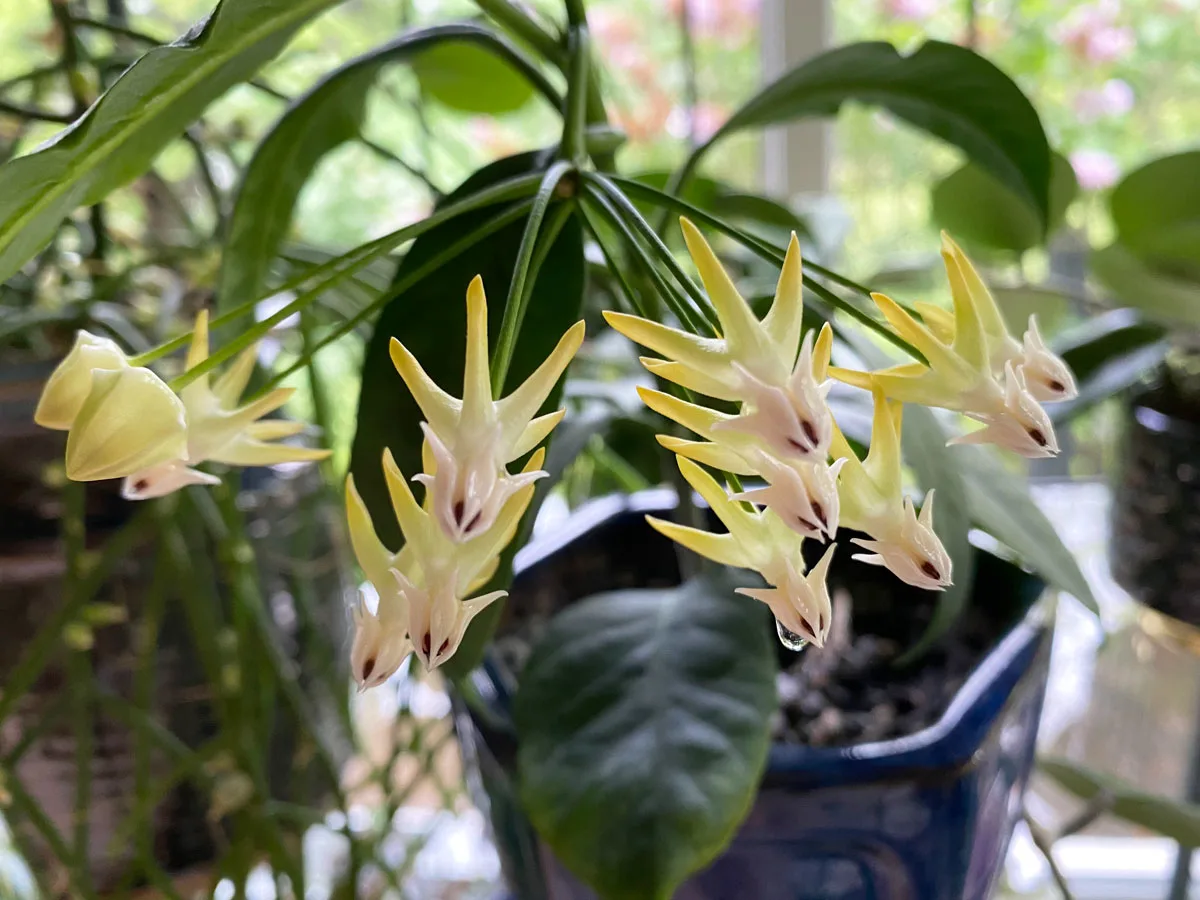
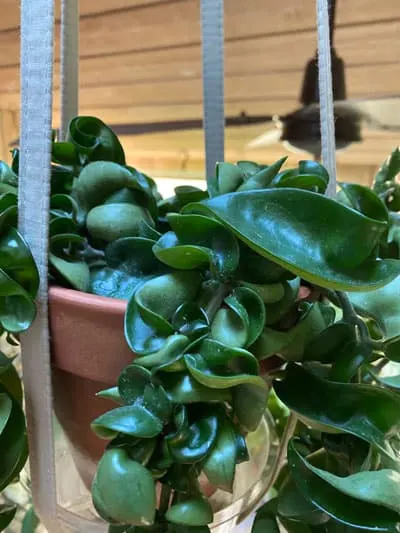
Anne O'Malley
Monday 20th of May 2024
see below
Anne O'Malley
Saturday 18th of May 2024
30 years ago I brought a small hoya slip from a plant in australia to ireland. ? hoya australis could be carnosa. . It has been a wonderful plant. grew and flowered anywhere I put the pot. always on a windowsill. 10.feet minimum for all these years. pruned many times. no special soil or care.3 years ago I moved house..same country. First it flowered and was fine. cut back. moved again. no flowers for 2 years. last year 1 magnificent flower. this year a beginning of a flower on last peduncle and small possible peduncle. how can I get it to have more flowers. it is facing window. pot bound in 10 inch pot ..water only when dry about 1- 2 weeks. occasional fertiliser. should I prune clumpy groups of leaves. lots of new vines without leaves at present. Help!!.
Raffaele Di Lallo
Tuesday 21st of May 2024
Hi Anne! Have you tried all of the tips I mentioned in the post? You can always increase the light by moving the plant closer to a window. Since you moved so many times, you may need to find where it is happiest in your current home. Also, when your flowers are done, I would leave the flower spur on the plant...don't cut it off because they will rebloom from those areas :-) I hope this helps a bit.
Fé Gunnell
Tuesday 14th of May 2024
Thank you for all that information about Hoya carnosa. Very helpful hints and how to’s.
May I inquire why my plant although growing very strongly doesn’t have shiny healthy looking leaves that it used to have? It seems from your plant information, I am doing alright except . Would appreciate your comment on this.
Raffaele Di Lallo
Wednesday 15th of May 2024
It's hard to say without seeing a photo. Is it really dusty perhaps? If it is, give it a good shower and rinse it off. Are you fertilizing?
Susan Cosgrove
Tuesday 27th of February 2024
Hi. I am the happy recipient of a hoya carnosa after the friend who gave her to me emigrated and couldn't take her. I have become anxious that I am caring for her correctly. I have two concerns 1/ there are large gaps between leaves along one of the original stems. There are numerous nodules along the stem which don't appear to be changing. 2/ Additionally, since being in my possession, a long leaf free stem, apart from one leaf at it's base, has grown outwardly rather than hanging down as the other stems do. There are many nodules along it but in the past few months since it grew nothing has developed. However I find it quite fascinating that it seems to have a life of its own, moving from one side to the other during the evening. Having read every parts of your write up on hoyas I feel that I am doing everything correctly. Please advise. Thank you.
Raffaele Di Lallo
Tuesday 27th of February 2024
Hi Susan! The new vines will appear leafless for a while, and eventually they will grow leaves. This is totally normal! I'm not sure how old that vine is...but the one ones will behave that way. And as far as the one that is going sideways, over time as it grows leaves and gets heavier, it should start to hang down. If your plant looks healthy otherwise, everything is ok. I hope this helps.
Lisa
Thursday 14th of September 2023
I am plant sitting for a friend and she had three cuttings in a glass of water from her mothers (very old) hoya carnosa. She said her mothers plant has t bloomed in years. Wouldn’t you know it while I was watching the CUTTINGS bloomed. Two beautiful blooms. But not the mother plant. She asked if I could pot it in soil for her but I am u sure if this will stress the cuttings and kill them. Would you recommend potting it in soil while it is in bloom? Has this ever happened to anyone ?
Raffaele
Thursday 14th of September 2023
Hi Lisa! That happened to me once. If you want to just enjoy the blooms, go ahead and do so, and then you can pot them up! There is no harm in waiting a little longer.